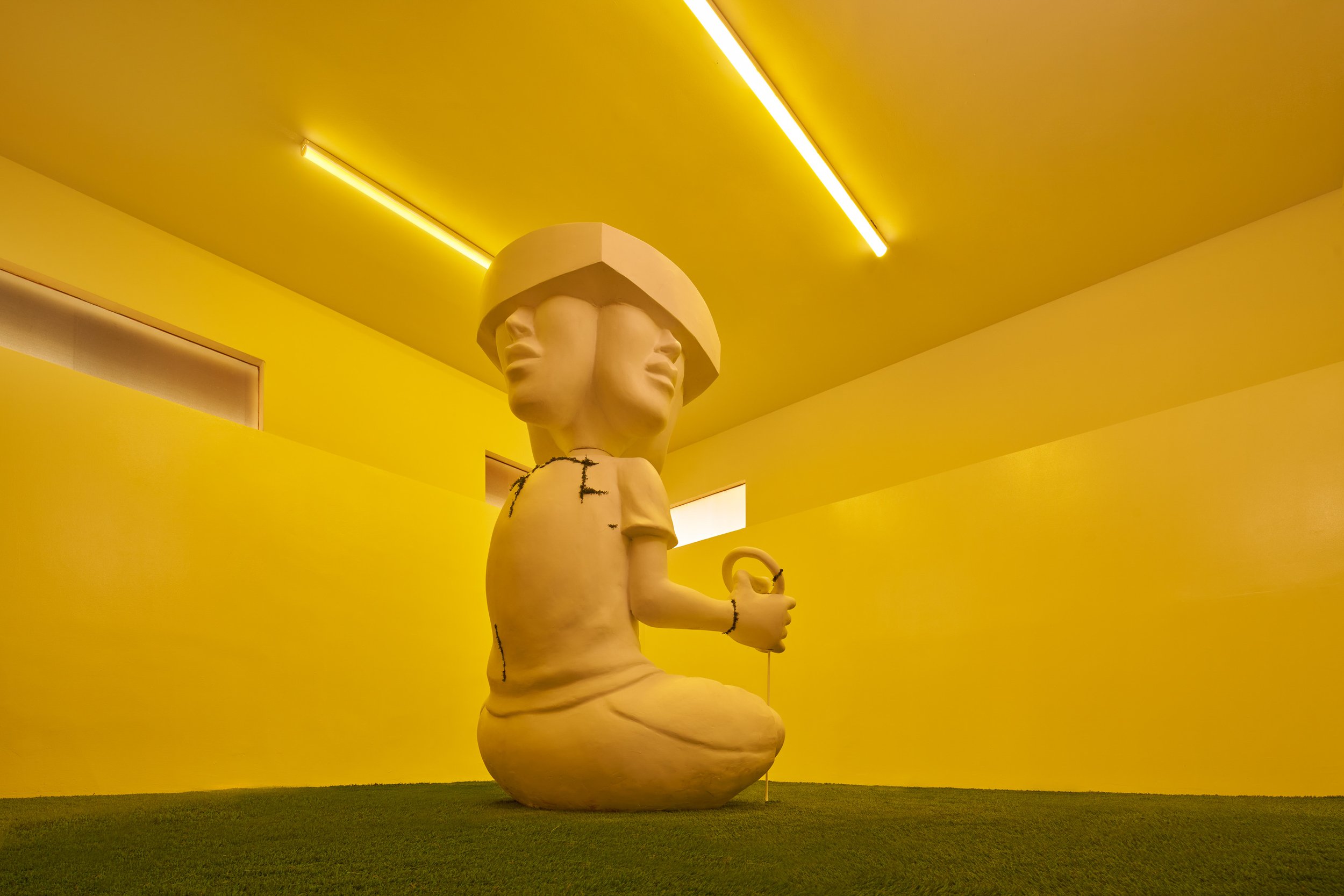The Teiger Foundation recently announced the recipients of its latest round of grants for ambitious curatorial projects at the intersection of climate and social justice. Funds totaling $4 million will help support the work of fifty curators—each of whom will receive between $50,000 and $150,000—involved in curatorial projects focused on environmental and societal sustainability or specifically concerned with under-recognized diasporic and BIPOC narratives at the intersection of decolonization, indigeneity and environmental crises.
Grantee projects at thirty-three institutions around the U.S. include the first major show at the Hammer Museum focused on indigeneity, “Several Eternities in a Day” curated by Pablo José Ramirez; an exhibition inspired by the Mesoamerican mythological figure of the nahual proposed for REDCAT (Los Angeles, CA) by chief curator Daniela Lieja Quintanar and assistant curator Talia Heiman; and an ongoing collective investigation by artist, activist and researcher Imani Jacqueline Brown into Louisiana’s burial groves, where the remains of enslaved Africans have withstood the expansion of sugarcane plantations and petrochemical plants.
Some curators awarded Teiger Foundation grants will use the funding to study and pay overdue tribute to underrepresented artists, like Hmong-American photographer Pao Houa Her, whose first survey will be simultaneously presented at San José Museum of Art and the John Michael Kohler Arts Center in Sheboygan, Wisconsin to coincide with the 50th anniversary of the Hmong resettlement in the U.S. A major survey of works by Puerto Rico-based Cuban artist Zilia Sánchez will receive funding to travel from ICA Miami (where it originated) to the Museo de Arte Puerto Rico in San Juan, as proposed by the museum’s executive director María C. Gaztambide.
SEE ALSO: Observer’s Guide to This Year’s Must-Visit September Art Fairs
In many cases, the Teiger Foundation grants will help institutions extend the impact of their projects by bringing them to new communities via institutional partnerships. Korean performance and sound artist Christine Sun Kim will receive her first career survey through a partnership between the Whitney Museum of American Art’s curator associate Jennie Goldstein, Walker Art Center curator Pavel Pys and independent curator Tom Finkelpearl. The funding will also support The Brick and LACMA collaborating with artist Kara Walker on “MONUMENTS,” which will bring together decommissioned Confederate monuments with contemporary artwork in an exhibition five years in the making.

The profile of the selected projects emphasizes the attention that Indigenous practices and revived ancient traditions are receiving in the contemporary art system as a way to tap into alternative knowledge to address the environment and sociopolitical crises we are experiencing today. This year, the Teiger Foundation is also launching “Climate Action for Curators,” with an additional $500,000 in funding for five recipient organizations that will provide curators with the services of a sustainability coach who will help them develop a tailored climate plan based on the specific project. Once a plan is created, grantees will receive $25,000 to implement programming and pay for operations expenses.
“The communities some of our grantees represent or are embedded in—communities of color, Indigenous communities, immigrant communities and organizations located in southern or southwestern areas of the United States—are facing some of the most severe impacts of climate change,” Teiger Foundation executive director Larissa Harris told Observer, adding that one of her goals is to eventually extend the organization’s climate support to every grantee.
The grantees were selected from a pool of 500 proposals submitted by curators nationwide and reviewed by Teiger Foundation staff with an advisory panel of peer curators: Léuli Eshrāghi, PhD, curator of Indigenous Practices at the Musée des beaux-arts de Montréal; Carla Acevedo-Yates, the Marilyn and Larry Fields curator at the Museum of Contemporary Art Chicago; Howie Chen, curator at 80WSE Gallery; independent curator Yesomi Umolu; and independent curator and writer Linda Norden.
“Our application asks curators to explain the thinking behind the exhibition or project and also asks them to write about a past project so we can get a sense of their professional trajectory and evolution over several years,” Harris explained. “When selecting, we apply several lenses, from innovation (expanding or refreshing our understanding of an artist, an idea, a period, a format, a way of approaching or including collaborators, etc.) to alignment (why this particular curator, this particular artist or artists, at this art organization, at this time) and the impact of the proposed project. We also look at geography, demographics and the organization’s resource access.”

Who is behind the Teiger Foundation?
The Teiger Foundation was established in 2008 by late art collector and patron David Teiger to support contemporary curators pursuing ambitious, innovative and unconventional projects that push the canon of modern art and impact their communities. A prominent American philanthropist, Teiger was known for his discerning eye and the significant impact he had on the contemporary art world. The former McKinsey & Company executive was particularly interested in the work of emerging artists, often supporting or acquiring pieces by those just beginning to make their mark on the cultural landscape—Teiger Foundation board president John Silberman has described Teiger as “committed to out-of-the-box thinking.” David Teiger was also a notably generous patron of the arts, supporting many museums and institutions. His arts philanthropy extended to major donations, including to MoMA in New York (where he was a trustee) and other large cultural institutions. After his death in 2014, Teiger’s art collection, which included works by major contemporary artists like Dana Shultz, Peter Doig and Elizabeth Peytost and was valued in the hundreds of millions, was auctioned with proceeds going to support the arts and several charitable causes.
Between 2020 and 2022, the Teiger Foundation distributed $8 million to support artistic leadership and curators at nonprofit institutions. In 2023, the Foundation adopted the climate action focus that has become central to its grant-giving and support efforts.

